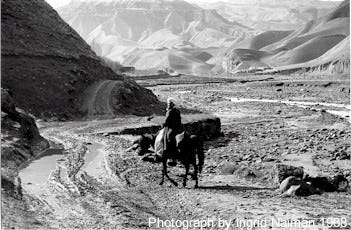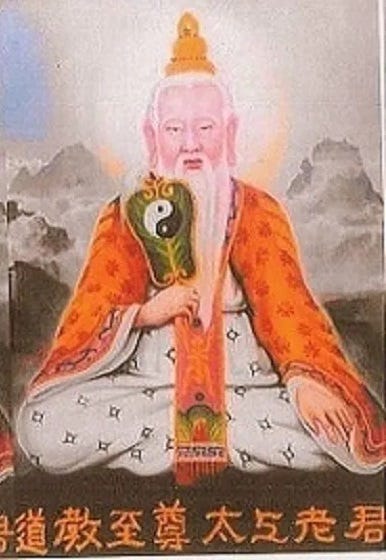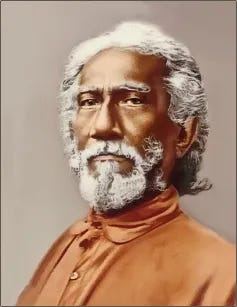Back in the early seventies, I developed a thesis that astrology was divinely revealed to humanity . . . because what is involved is so complicated that a single person or even a group of people studying for centuries could not have made the observations and calculations necessary to develop such an elaborate and complex system. There was no textbook in which such speculations could be found so this was simply an assumption I made based on how very, very difficult, well impossible, it would have been to put together pieces of the puzzle that worked in every latitude and included all the cycles and asymmetrical orbits that are the nuts and bolts upon which horoscopes are cast.
It was decades later that I discovered the Siddhars of ancient India and felt vindicated when learning that they wrote thousands of books on astrology, medicine, philosophy, music, poetry, and even geography. The word Siddhar comes from “siddhi” which are skills developed by exceptional beings. Were they great yogis whose experience was largely the result of countless Earth incarnations, or were they aliens?
Sometimes, readers enjoy my personal stories and others probably think a more formal writing style would be appropriate. In defense of today’s post, I would like to create a context for understanding siddhis and later Siddhars.
In 1968, I drove a Land Rover from England to India where I was to assume my second post with the State Department. I accepted the assignment on the condition that I could have the leisure for this adventure. The trip took 100 days, and while there is much that could be told, two highlights might be mentioned in the context of this post. The first perhaps set the stage for viewing the world and its history in a new light. I was completely enamored of the Musée de l’Homme in Paris. It is a kind of anthropological museum . . . and for the record, anthropology was my favorite undergraduate elective, far more interesting to me than philosophy or history. The exhibits at the museum were riveting so I stayed in Paris for several days and went back again and again. The Egyptian exhibits were fascinating, but music was somehow even more intriguing and set the stage, so to speak, for what I would hear on the radio while driving further and further to the East.
Sound, as I am sure I have mentioned in previous posts, is related to the etheric element and therefore to the structure of the etheric body, but even if we understand the concept of an octave, the way the spectrum is divided within the octave varies tremendously from one culture to another, but what I heard on the radio was subtle changes, starting perhaps in Greece where the music is wonderfully exciting but definitely different from music in Italy, not to mention Germany or France. In Turkey, the music started to sound more exotic, and this continued to be the case as Rimmerfjord, the name my grandfather gave the Land Rover, and I proceeded towards India. I was still a long way from putting the thousands or millions of pieces of the jigsaw of life together, but the stage was becoming more and more interesting, certainly more alive than anything I learned in school.
Since we are shaped by sound, developing a new appreciation for differences in how we listen and hear was very important, but the second highlight occurred in Northern Afghanistan, high in the mountains in December. I was taken to a cave and shown a picture of Jesus sitting in lotus posture. I understood that what prompted the men on horseback to show me this was their fascination with my blue eyes and blonde hair which were similar to the cave painting. They wanted to know where I came from since they had never seen anyone with my features before.
For me, I immediately understood that Jesus had studied in the East and was teaching a watered down version of ancient esoteric wisdom for Middle Easterners. This was also a major piece of the gigantic puzzle; and, for the record, it probably takes hundreds or thousands of incarnations to complete the puzzle. This said, each new piece that fits is thrilling.
I spent Christmas in Kabul and arrived in New Delhi before the end of the year. On my first day in India, I was invited to accompany a Kashmiri to visit Prof. Dr. Lokesh Chandra whose family had collected rare manuscripts and art, mainly from Mongolia and Tibet. For the next 18 months, I visited Prof. Dr. Lokesh Chandra almost every day after work and learned so much, including that one’s thinking and life experience should mature before publishing. In short, the entire harvest of one’s incarnation might involve adding only a few sentences to the vast literature already in existence. This made the publish or perish mentality of academia look as childish as it actually is.
Jumping forward, I quit the State Department in mid-1970 and went to Sweden to recover from all the tropical fevers I had contracted while posted in India. A point came when my temperature was normal, and I ordered a Citroen Ami 8 and drove from Paris to Kathmandu. Though not equipped for on board cooking or sleeping, it was a lot more reliable than the Land Rover. In Nepal, I was the guest at a New Year’s party where I met the Abbot of Thyangboche Monastery. He invited me to visit his monastery, and I set off, on foot, with two Sherpas in early March. However, the abbot was already there ahead of me. I asked him how he got there so fast since I knew his plan was to leave well after me. He described siddhis and inferred that he had teleported himself from Kathmandu to Thyangboche, which, for the record, is the last village before Everest base camp.
Though listening carefully, I was freezing in the Abbot’s study. It was so cold that I felt that the thick carpets were sticking to me as if made of dry ice rather than wool. The Abbot chuckled and said that I should concentrate on the intersection of three nerves above the navel to keep warm. He made some jokes about electricity and Indians who burn cow dung to make fires, but he realized I was not a yogi and invited me to continue the discussions in the kitchen which was indeed much warmer than his private study. The monks in the kitchen were visibly surprised to see the Abbot so I am sure his effort to be hospitable was completely irregular.
In any event, he continued to discuss siddhis without ever implying that there is anything special about developing such talents.
Rewinding a bit, there was a bookstore in the lobby of the embassy that specialized in books on everything Asian. I was without doubt their best customer and had bought every book on Tibet as well as Buddhism and ancient forms of medicine. However, compared to what is in print now, there was not much that was original in the late sixties. The owner of this little enterprise said that anyone with a scissors and pot of glue can author a book in India . . . not much different from bloggers today except that they use a mouse and Crl +C and consider that this is journalism.
Though the seeds were planted more than half a century ago, Prof. Dr. Lokesh Chandra was right about their germination.
The Siddhars
Traditionally, there were 18 Siddhars, historic beings who were prolific writers with phenomenal transcendental gifts. Most hailed from South India and wrote verses in what is now an archaic form of Tamil. Many traveled extensively, certainly as far as China, but most likely also to South America. One of the Siddhars, Kamalamuni, was born in Varanasi (Benares) and was said to have been Confucius, simultaneously with his life as a Siddhar. He was the guru of my favorite Siddhar, Boganathar, who was also Lao Tzu. I discussed this with a Chinese colleague who studied at the White Cloud Temple in Beijing. At first he was indignant and rejected the idea, but he came to understand that Lao Tzu basically appeared out of nowhere without any history and his name means white hair. What is said about his past is of a more or less mythological nature. Bogar said that he revived the body of a dead man and used it when manifesting as Lao Tzu.
If one takes these curious statements at face value, we see not only a seeding but a highly developed intention to educate and ennoble humanity. In the case of Bogar, he is credited with the discovery of an elixir of immortality, the foundation of kaya kalpa, a protocol for rejuvenation and, in some cases, immortality. This is the word used in the Chinese version and I confirmed that it means to live forever, not regenerate as was the case with Tapaswiji Maharaj who did kalpa three times in our era. One of Bogar’s students is the famous Mahavatar Babaji who taught Kriya Yoga to Lahiri Mahasaya who taught Sri Yukteswar, author of The Holy Science and the guru of Paramahansa Yogananda.
The Holy Science
Sri Yukteswar wrote that the purpose of his writing the seminal book was to show the essential unity of all religions.
If truth is really the truth, it will be the same for everyone, scientists and mystics, Christians and Hindus, etc. I have always understood that this is the case, but Sri Yukteswar dotted the “i’s” plus some. These are the four sections of The Holy Science.
The Gospel: “…seeks to establish the fundamental truth of creation, and to describe the evolution and the involution of the world.”
The Goal: “All creatures, from the highest to the lowest in the link of creation, are found eager to realize three things: Existence, Consciousness, and Bliss.”
The Procedure: “…deals with the method of realizing the three purposes of life.”
The Revelation: “…discusses the revelations which come to those who have traveled far to realize the three ideals of life and are very near their destination.”
Every few years, I reread The Holy Science. It is astrological and philosophical. Its implications are far reaching. Sri Yukteswar posits that the Sun revolves around the center of the creative power of the Universe which regulates Dharma, what we might call duty, responsibility, or destiny (my loose effort to summarize a truly pivotal book).
I want to close this particular post with the promise to continue the saga. I feel this is the beginning of a new chapter, post number #201, and I want to go deeper into astrology and astronomy, both Ayurvedic and Siddha medicine, rejuvenation, music, philosophy, and destiny.
Copyright by Dr. Ingrid Naiman 2024 || All Rights Reserved
For permission to quote, please contact the author. Sharing via e-mail and posting links are welcome so long as the author and source are properly cited. Reprinting is strictly prohibited.
This Substack column was launched in mid-January 2023. Paid subscribers are greatly appreciated, but please note that all subscriptions are going through the Institute for Invisible Epidemics, and will appear on your credit card as iie-academy. If monthly or annual commitments are not congenial, consider a one-time donation using this link.
Image Credits:
Thyangboche Monastery: © Gail Johnson | Dreamstime.com
Lao Tzu: mydattatreya.com
Sri Yukteswar: yssoindia.org







ANNOUNCEMENT: Ingrid passed away peacefully in her house on Jan 23, 2025. She will be remembered by her beloved friends.